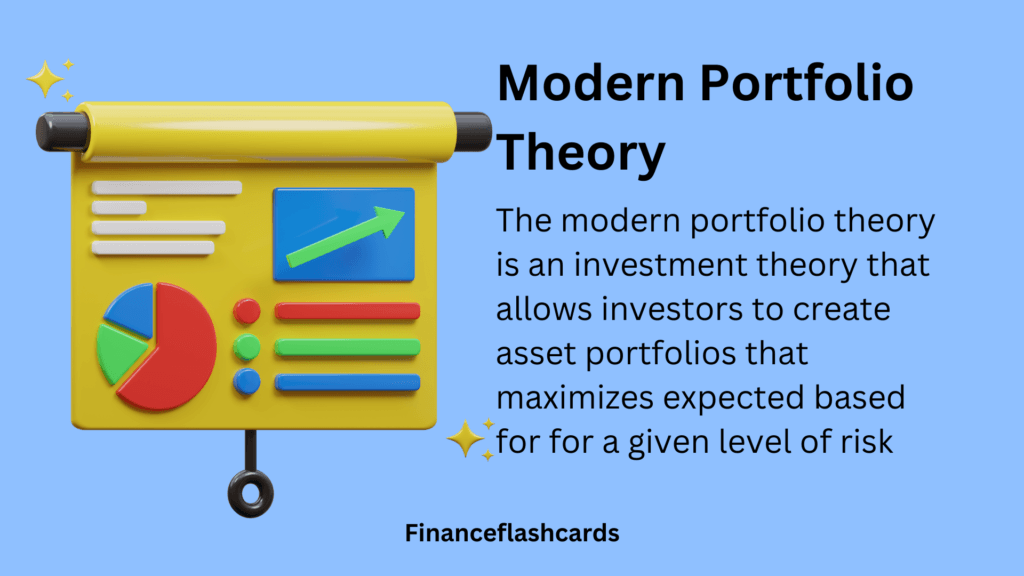The modern portfolio theory is a mathematical model/investment theory that allows investors to create asset portfolios that maximizes expected based for for a given level of risk.
Table of Contents
What Is Modern Portfolio Theory (MPT)

Understanding the Modern Portfolio Theory (MPT)
The core idea of Modern Portfolio Theory (MPT) is diversification to optimize the balance between risk and return. Rather than focusing on individual assets, MPT emphasizes constructing a portfolio where the assets collectively work to reduce overall risk and enhance returns.
The core idea is that investors can construct an “efficient portfolio” that maximizes returns for a given level of risk or minimizes risk for a desired level of return.
Core Principles of MPT
1. Diversification
Diversification is a strategy to invest your fund in different asset categories to reduce idiosyncratic risk (Idiosyncratic risk is a type of financial risk that is specific to a particular asset or investment). Diversification can be asses by the correlation between assets, which means how two assets are correlated to each other and it is measured using the correlation coefficient, which lies between -1≤ρ≤1.
2. Efficient Frontier
Click here for the Excel Workbook

3. Correlation Between Assets
- A correlation coefficient of -1 demonstrates a perfect negative correlation between two assets. It means that a positive movement in one is associated with a negative movement in the other.
- A correlation coefficient of 1 demonstrates a perfect positive correlation. Both assets move in the same direction in response to market movements.
Key Terms Used In MPT
1. Expected Return
2. Standard Deviation(Risk)
- The individual standard deviation of each asset in the portfolio.
- The proportion (weights) of each asset within the portfolio.
- The correlation between the returns of the assets in the portfolio.
Critics & Limitations
Modern Portfolio Theory (MPT), while influential, has several limitations. It assumes that investors act rationally and that markets are efficient, which often isn’t the case due to emotional biases and mispricings.
The reliance on historical data to estimate future returns and risks can be unreliable, especially in volatile markets. MPT also focuses solely on volatility as a measure of risk, overlooking other crucial risks like liquidity or geopolitical factors.
Additionally, correlations between assets, a key factor in diversification, can shift unpredictably during crises, reducing their effectiveness. The theory’s static nature and disregard for qualitative factors, such as individual goals or ethical considerations, further limit its real-world application.
Despite these critiques, MPT remains a cornerstone of investment strategy when adapted to modern complexities.
The Bottom Line
The gist of MPT is that the market is hard to beat and that the people who beat the market are those who take on above-average risk. It is also implied that these risk-takers will get their comeuppance when markets turn do.
Then again, investors such as Warren Buffett remind us that portfolio theory is just that—theory. At the end of the day, a portfolio’s success rests on the investor’s skills and the time that they devote to it. Sometimes it is better to pick a small number of out-of-favor investments and wait for the market to turn in your favor than to rely on market averages alone.

